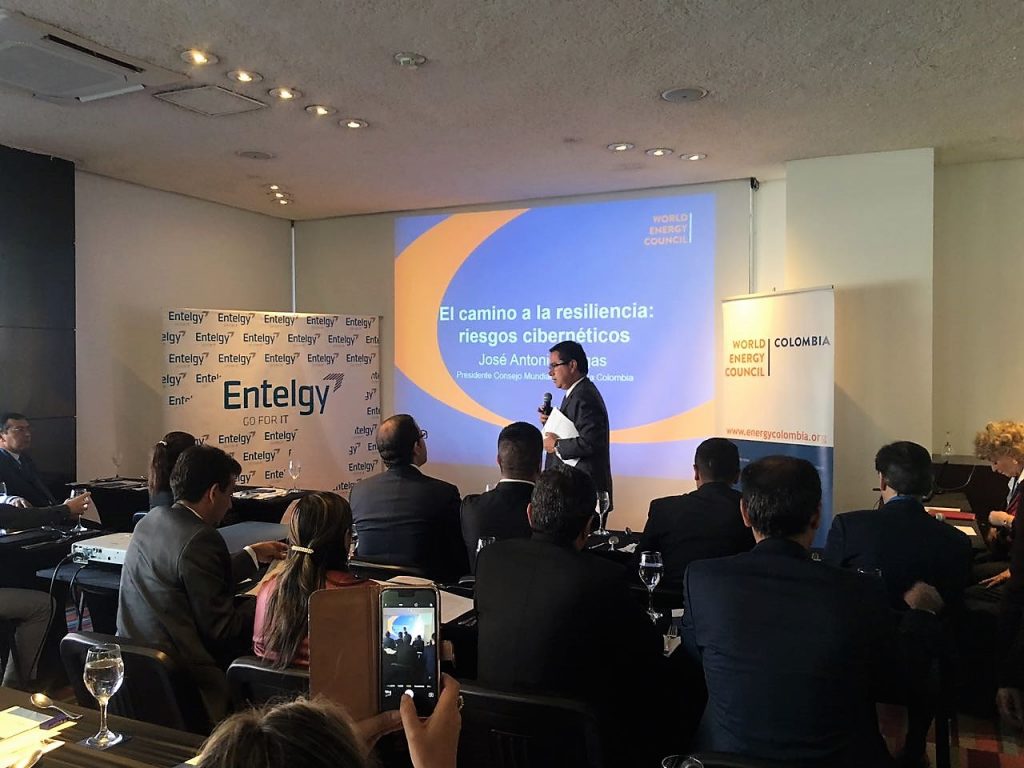On 7 February, the World Energy Council Colombia and key energy leaders from government and the private sector convened for high-level luncheon meeting to explore the best way forward for the region to be better prepared for future Cyber risks.
José Antonio Vargas Lleras, Chair of the Council’s Colombian member committee, gave a presentation on the World Energy Council’s recent Road to resilience: Managing Cyber risks report. It investigates how cyber risks can best be managed, taking into account the changing nature of the energy industry and energy infrastructure. Actions were recommended for decision makers and stakeholders to improve the sector’s response to rising cyber threats, as part of a wider move toward greater resilience.
The increased digitisation of the sector can improve its efficiency but at the same time make it more vulnerable to these risks. The sophistication and frequency of the attacks on energy infrastructure have the potential to move from the cybernetic spectrum to the physical world and by 2018, it is expected that the oil and gas industry alone, will be spending $ 1.87 billion each year on cybersecurity.
On 8 February, the World Energy Council co-hosted an event with Marsh Panama to present a joint report on extreme weather and lead the way in creating a new Council member committee in Panama.
Key figures in attendance included Panama’s Energy Secretary Victor Urrutia and some of the region’s major energy companies such as CELSIA, Etesa, Enel and AES. Extreme weather events have become much more common. Globally, over the past 3 decades, since 1980, the annual number of extreme weather events, have more than quadrupled from 38 in 1980 to 174 in 2014, according to the Road to resilience: managing and financing extreme weather risks report. However, despite the enormous potential for generating clean energy through hydropower in the region and the traditional political support for this source, it is very vulnerable to hydrological cycles and extreme weather events like El Niño. Energy leaders and experts cite hydrology as the main internal determining factor in the national electric power sector.
A example cited was Chile, where hydroelectricity plays a strong role in the energy matrix representing 60% of the generation in the system since September 2015. Between 2010 and 2015 the lack of rainfall had been classified at “mega drought” levels, resulting in a period that reduced the contribution of hydroelectricity for electricity generation to below 30%.
A triple transition in energy is under way as we move away from carbon-based fuels, towards decentralised, zero-marginal cost energy markets, and a more complex market structure. For the power executive, these ongoing events mean business as usual is no longer an option. Increasing the resilience of energy infrastructure to extreme weather events is a must. Power companies, and not just in Latin America, need to be smarter not stronger, to ensure the reliability of the global energy system as a whole, therefore, adaption and mitigation are critical in building resilience.
The impact of extreme weather events, cybersecurity threats and the energy-water-food nexus on the energy sector are powerful drivers to adapt and innovate. This will result in different ways of thinking about infrastructure and critical system components. To navigate these transitions with limited resources defined by a sluggish growth context, investors and governments will have to be very clear what their strengths and priorities are.






